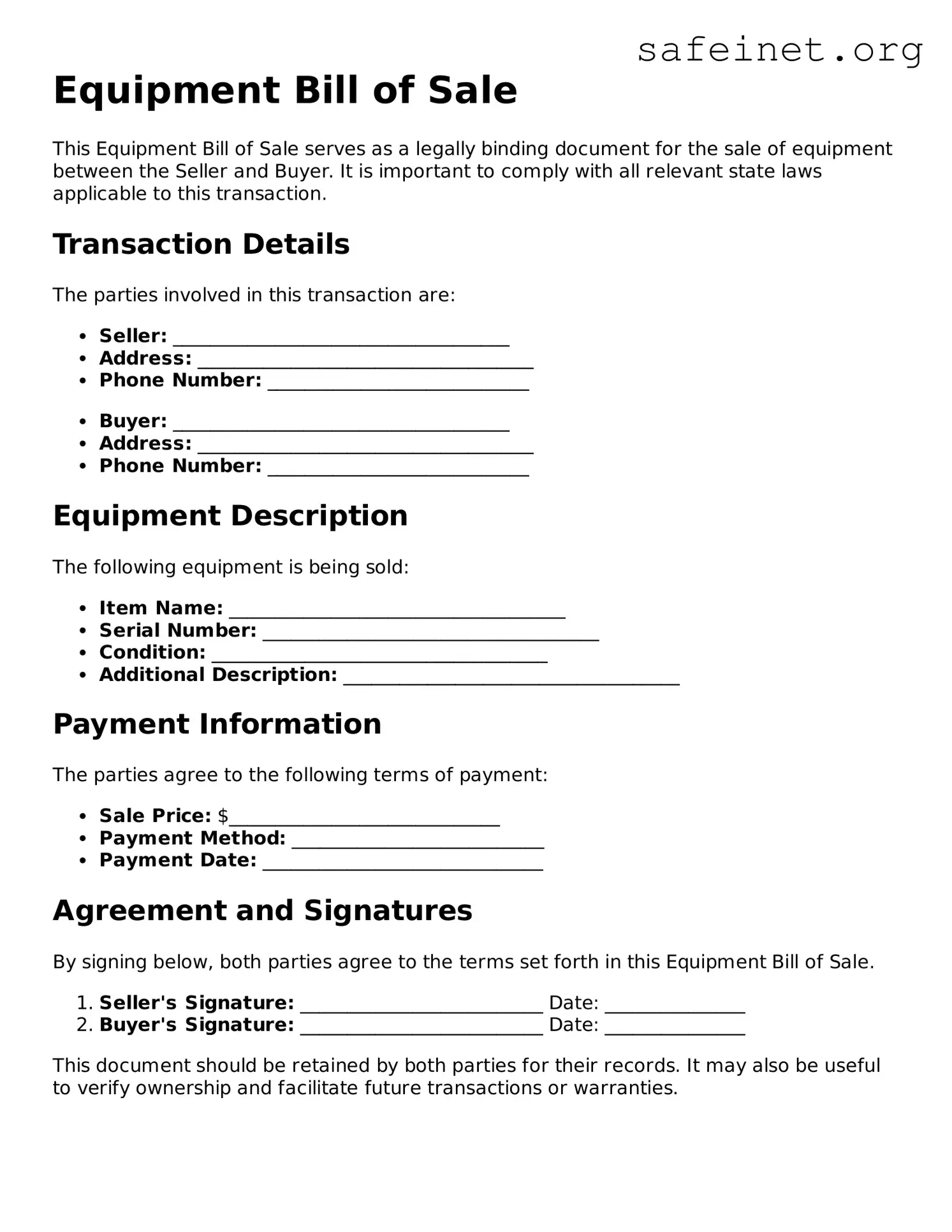What is an Equipment Bill of Sale?
An Equipment Bill of Sale is a legal document that transfers ownership of specific equipment from one party to another. It outlines the terms of the sale and provides proof of the transaction, ensuring both the buyer and the seller have a record of the agreement.
Why is an Equipment Bill of Sale important?
This document is crucial for several reasons. It protects both parties in the transaction by clearly articulating the terms, including the description of the equipment, sale price, payment terms, and any warranties or as-is conditions. It also serves as evidence in case of future disputes regarding ownership or condition.
What details should be included in an Equipment Bill of Sale?
The form should include essential information such as the names and addresses of the buyer and seller, a detailed description of the equipment being sold, the sale price, payment method, any warranties or disclaimers, and the date of the sale. Both parties should sign the document to confirm their agreement.
Is an Equipment Bill of Sale required by law?
While it is not universally required by law, an Equipment Bill of Sale is highly recommended for any equipment transaction. Some states may have laws regarding the transfer of specific types of equipment, making it necessary to have a bill of sale for legal purposes.
Can I create my own Equipment Bill of Sale?
Yes, you can create your own Equipment Bill of Sale. Many templates are available online, which can be customized to meet your specific needs. However, it is important to ensure that all necessary information is included and that the document complies with local laws.
Do I need a witness or notary for an Equipment Bill of Sale?
In most cases, a witness or notarization is not required for an Equipment Bill of Sale, but it can add an extra layer of authenticity. Some buyers or sellers may prefer to have the document notarized, especially for high-value transactions, to increase trust and validity.
What if the equipment has defects or issues?
When selling equipment with defects, it is essential to disclose these issues in the Bill of Sale. This protects the seller from future liability and informs the buyer about what they are purchasing. Both parties should agree on whether the equipment is sold as-is or with certain warranties.
How can an Equipment Bill of Sale protect against fraud?
Having a written Equipment Bill of Sale provides a formal record of the transaction, making it harder for either party to claim that a deal did not occur or that the item differed from what was sold. Detailed descriptions and signatures serve as proof of the agreement and help prevent misunderstandings or deceit.
What happens if I lose the Equipment Bill of Sale?
While losing an Equipment Bill of Sale can be inconvenient, it does not invalidate the sale. The buyer and seller can create a new document outlining the specifics of the original agreement. It's a good practice to keep copies and store them in a safe place to avoid this issue.
Where can I get an Equipment Bill of Sale form?
You can find Equipment Bill of Sale forms at various sources, including legal websites, office supply stores, or local legal aid organizations. Many templates are available online for free or at a minimal cost. Ensure you select one that is appropriate for your state and situation.
